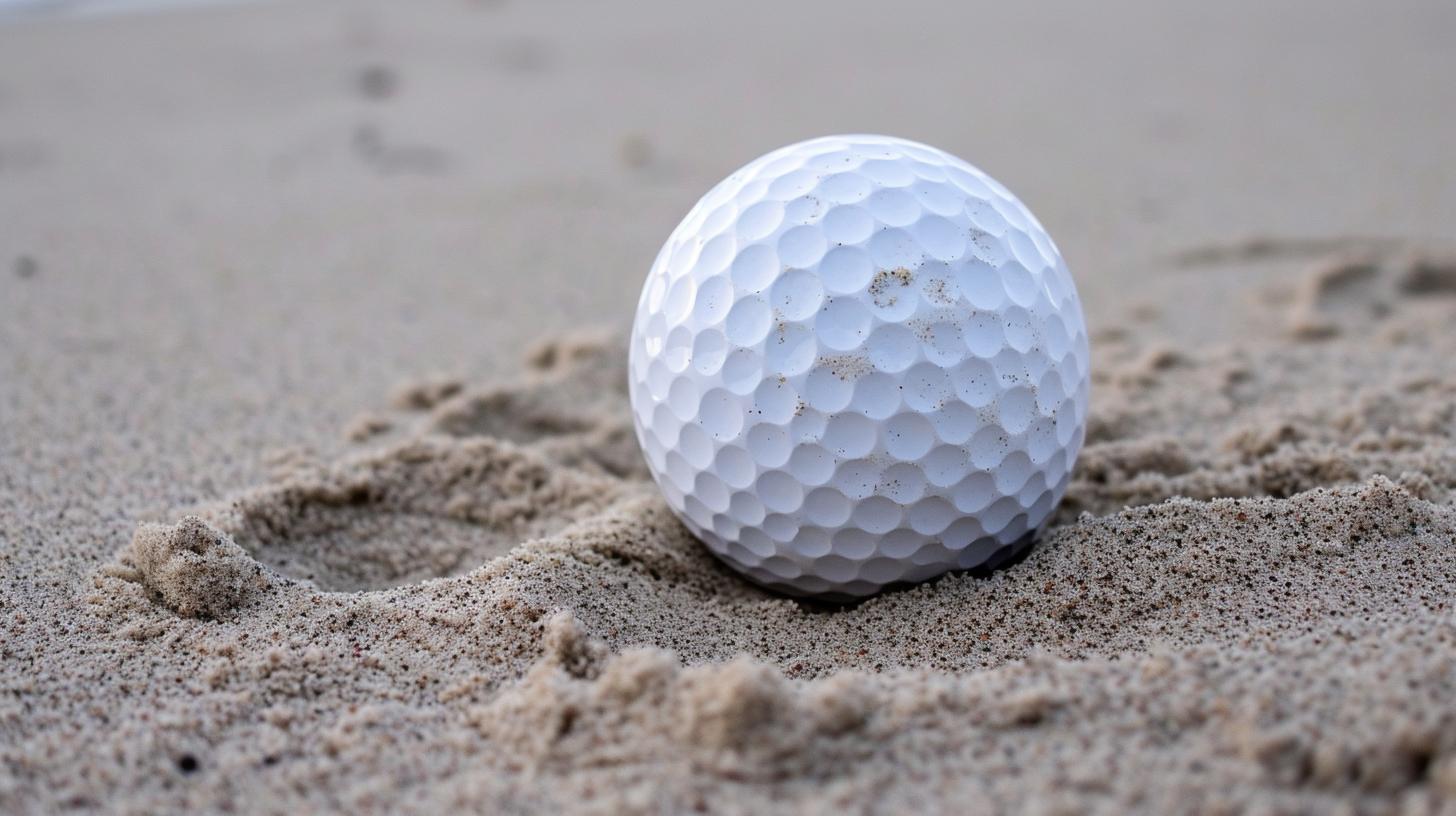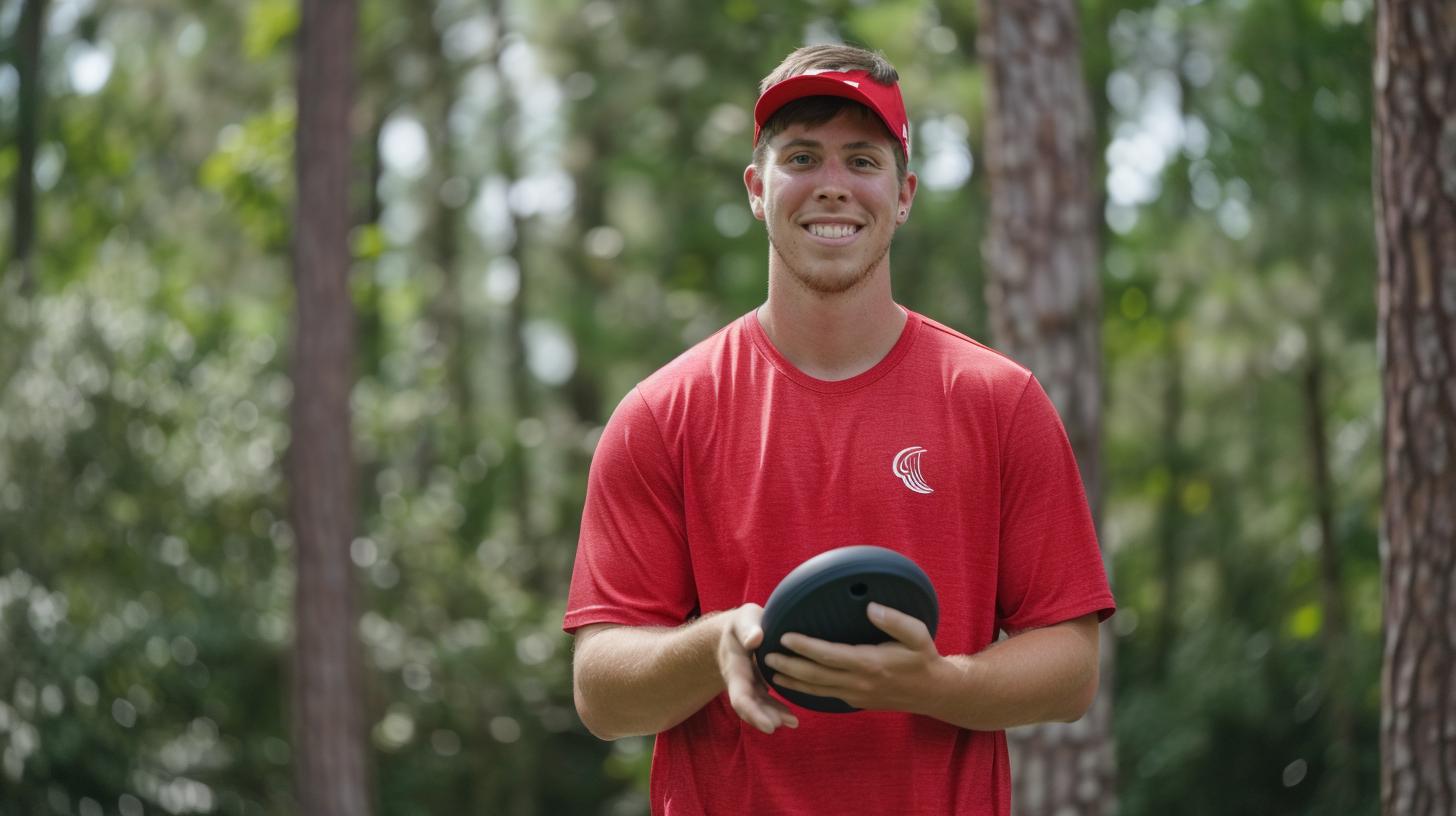
Have you ever wondered what’s inside a golf ball? It’s not just a simple rubber sphere – there’s actually a lot more going on beneath the surface. In this article, we’ll explore the inner workings of the golf ball, from its outer layer to its core, and everything in between.
We’ll start by taking a closer look at the anatomy of a golf ball, examining its outer layer and uncovering what makes up the center. Then, we’ll delve into the science behind the dimples on the surface and how they affect performance. From there, we’ll explore the composition of the cover material and how it impacts the ball’s playability.
As we continue our journey through the layers of a golf ball, we’ll also discuss compression and its role in performance. We’ll examine how advancements in design have led to modern multi-layered balls and look at how different core and cover materials can impact overall performance. And finally, we’ll take things a step further by delving into the chemistry and engineering behind golf ball construction.
Join us as we uncover the secrets hidden inside every golf ball, and gain a deeper understanding of what makes these small but mighty spheres such an essential part of the game of golf.
Uncovering the Core
When it comes to understanding what’s inside a golf ball, the core is a critical component that affects the performance of the ball. The core of a golf ball can vary in composition, with different materials and constructions impacting the ball’s characteristics such as distance, spin, and feel. Let’s take a closer look at what makes up the center of a golf ball.
The core of a golf ball is typically composed of various materials such as rubber, resin, or other synthetic compounds. These materials are designed to provide the necessary energy transfer and compression upon impact with the clubface. Generally, there are two main types of cores found in golf balls: two-piece and multi-layered.
- Two-piece Core: This type of core consists of a single solid piece often made from high-energy acrylate or resin. It is known for providing maximum distance due to its low spin rates.
- Multi-layered Core: These cores are made up of different layers with varying compression and hardness. This construction allows for more control over spin rates and feel, making them popular among both amateur and professional players.
The development and advancement in technology have led to the creation of innovative core designs that cater to different skill levels and playing styles. With manufacturers continuously experimenting with new materials and constructions, golfers now have access to a wide range of options when it comes to choosing a golf ball that suits their game. As we continue to uncover what’s inside a golf ball, understanding the core is crucial in determining how it will perform on the course.
The Science Behind the Dimples
Golf balls are not smooth spheres. They are covered in dimples, which are small indentations on the surface of the ball. These dimples play a crucial role in how the ball performs when it is hit by a golfer. Understanding the purpose of these dimples requires exploring the science behind their presence.
How Dimples Affect Flight
The main purpose of the dimples on a golf ball is to reduce air drag as the ball flies through the air. When a golf ball is hit, it creates a pocket of air in front of it, and this increases air resistance, slowing down the ball’s flight.
The dimples disrupt this pocket of air, allowing it to flow more smoothly over the surface of the ball. This reduction in air drag allows for greater distance and a more stable flight path.
The Effect on Spin
Dimples also impact how much spin a golf ball can generate when in motion. Backspin on a golf ball can help improve lift and increase distance traveled. The presence of dimples affects how much backspin can be achieved, as well as providing some control over side spin.
Optimizing Distance and Accuracy
By understanding the science behind dimples on golf balls, manufacturers are able to design and engineer balls that provide optimal performance for different types of players. Different patterns and depths of dimples can be used to maximize distance, accuracy, and overall flight characteristics based on whether a player needs low or high launch angles, less or more spin, or any other specific needs.
Understanding what’s inside a golf ball specifically includes knowing how these tiny indentations impact its flight characteristics. The design and engineering behind these dimples play an integral role in determining the performance of different types of golf balls.
Delving Into the Layers
When it comes to understanding what’s inside a golf ball, it’s important to take a closer look at the composition of the cover material. The cover is the outermost layer of the golf ball and plays a crucial role in determining its performance and feel. There are various types of cover materials used in golf ball construction, each with its own unique characteristics and benefits.
Surlyn Cover
One of the most common cover materials used in golf balls is Surlyn, a type of ionomer resin known for its durability and affordability. Surlyn covers provide excellent distance and durability, making them popular among amateur and professional golfers alike. The firmness of Surlyn covers also contributes to enhanced control and accuracy on the course.
Urethane Cover
On the other hand, urethane-covered golf balls are favored for their soft feel and superior spin control. Urethane covers offer more responsiveness and touch around the greens, making them a popular choice for skilled players who prioritize precision and control in their short game. While urethane-covered balls may not be as durable as Surlyn-covered ones, their performance benefits make them a preferred option for many golfers.
Multi-Layered Covers
In recent years, advancements in golf ball technology have led to the development of multi-layered covers that combine different materials to optimize performance. These multi-layered covers typically feature a combination of Surlyn and urethane layers, allowing manufacturers to fine-tune the balance between distance, control, and feel. By utilizing multiple cover materials, golf ball designers can cater to a wider range of player preferences and skill levels.
Understanding the composition of the cover material is essential for golfers looking to find a ball that suits their playing style and performance needs on the course. Whether it’s maximizing distance off the tee or gaining better control around the greens, choosing a golf ball with the right cover material can make a significant impact on one’s overall game.
The Role of Compression
When it comes to the performance of a golf ball, many factors come into play, and one of the most crucial is its compression. The compression of a golf ball refers to how much it deforms when struck. This factor greatly influences the distance, feel, and control of a golf ball. Here’s what you need to know about how the inside of a golf ball affects its performance through compression:
- Low Compression: A low compression golf ball is softer and allows for more deformation upon impact. This results in higher launch angles and greater distance, making it ideal for players with slower swing speeds.
- High Compression: On the other hand, high compression golf balls are harder and deform less upon impact. They offer more control and are better suited for players with faster swing speeds, as they can generate more power without sacrificing accuracy.
- Mid Compression: Mid compression golf balls strike a balance between low and high compression options. They provide a mix of distance and control, making them suitable for a wide range of players.
Understanding the compression rating of a golf ball can help players select the right ball for their game. With advancements in technology, manufacturers are now able to create multi-layered golf balls with varying levels of compression in each layer, allowing players to fine-tune their performance based on their individual needs and preferences.
In addition to the core material and construction, the cover material also plays a significant role in determining the overall compression of a golf ball. By carefully selecting materials and designing the inner composition of the ball, manufacturers can tailor the compression to meet the specific requirements of different types of players across various levels of skill and swing speeds.
The Evolution of Golf Ball Design
Golf balls have come a long way since the early days of the game, when they were made from leather pouches stuffed with feathers. These “feathery” golf balls were expensive and time-consuming to produce, but they represented a significant advancement in ball technology at the time.
The next major innovation in golf ball design came with the introduction of the gutta-percha ball in the mid-19th century. Made from the rubber-like sap of the sapodilla tree, these solid-core balls were much cheaper and easier to produce than feathery balls.
Fast forward to the modern era, and golf balls have evolved even further, undergoing numerous design changes and improvements along the way. Today’s golf balls are typically made with multiple layers, including inner cores, outer cores, and cover materials designed to maximize distance, control, and feel for different types of players. Advanced manufacturing processes and cutting-edge materials have allowed for precise control over factors such as spin rate, compression, and overall performance.
In recent years, golf ball manufacturers have continued to push the boundaries of design and construction, introducing new technologies and materials that offer improved performance for golfers of all skill levels. From multi-layer construction to advanced dimple patterns, today’s golf balls represent the culmination of centuries of innovation and development in ball design. What’s inside a golf ball has never been more important or more advanced than it is today.
| Golf Ball Design | Historical Context |
|---|---|
| Feathery Balls | Expensive & time-consuming production |
| Gutta-Percha Balls | Cheaper & easier to produce |
| Modern Multi-Layered Balls | Advanced technologies & Materials |
Materials Matter
When it comes to the materials used in the construction of golf balls, the impact on performance cannot be overstated. The core and cover materials play a crucial role in determining factors such as distance, spin, and feel. Understanding the composition of these components can provide valuable insight into what makes one golf ball different from another.
The core of a golf ball is typically made of synthetic rubber or resin, and its design directly impacts compression and energy transfer. Lower compression cores are often used in balls designed for slower swing speeds, while higher compression cores are found in balls for faster swing speeds. Additionally, some advanced designs feature multiple layers within the core to optimize performance for specific types of players.
On the other hand, the cover material is also a significant factor in determining the performance characteristics of a golf ball. Surlyn and urethane are two common cover materials used in golf ball construction. Surlyn covers tend to be more durable and provide a firmer feel, making them ideal for distance-focused balls. Meanwhile, urethane covers offer enhanced spin control and feel, making them popular among skilled players looking for precision around the greens.
In recent years, manufacturers have been experimenting with new materials and constructions to further enhance performance. By incorporating advanced polymers and proprietary blends into their designs, they aim to push the boundaries of what’s possible with golf ball technology. Ultimately, these innovations continue to shape the landscape of golf ball options available to players seeking specific performance attributes.
| Golf Ball Component | Common Materials |
|---|---|
| Core | Synthetic rubber or resin |
| Cover | Surlyn or urethane |
Beyond the Physical
In conclusion, the inside of a golf ball is a complex combination of materials and design elements that contribute to its performance on the golf course. From the outer layer to the core, every component plays a crucial role in determining how the ball flies, spins, and feels when struck by a club. The surface texture, cover material, and compression of the ball also have a significant impact on its behavior in various playing conditions.
As technology continues to advance, so does the evolution of golf ball design. From the simple feathery balls of centuries past to the multi-layered, high-performance balls of today, engineers and chemists have been pushing the boundaries of what’s possible in golf ball construction. Different core and cover materials are constantly being tested and refined to find the perfect balance of distance, control, and feel for players of all skill levels.
Ultimately, understanding what’s inside a golf ball not only gives players insight into how they can optimize their performance on the course but also serves as a testament to the innovative spirit driving advancements in sports equipment technology. As researchers continue to push the limits of material science and engineering in pursuit of better golf balls, players can look forward to continued improvements in their game.






